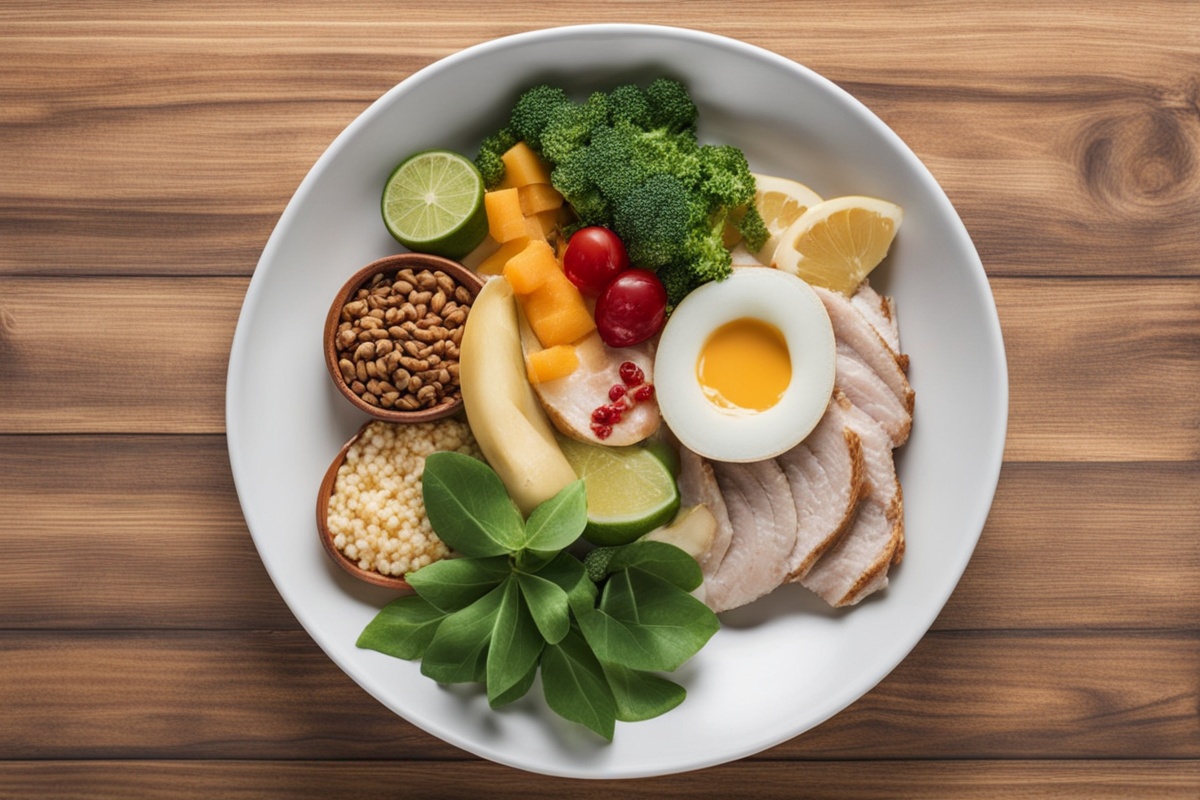Hey there, health enthusiasts! If you’ve been curious about fasting and its incredible potential to transform your wellness journey, you’re in the right place. Fasting isn’t just a trend—it’s a time-tested practice that’s gaining traction for its numerous health perks. Today, we’re diving deep into fasting benefits and how to craft effective fasting meal plans to support your goals. Whether you’re new to fasting or a seasoned pro, this guide will break down the science, offer practical tips, and help you navigate meal planning to make fasting sustainable and rewarding. Let’s explore how intermittent fasting, time-restricted eating, and other methods can fit into your life with ease!
What Are the Fasting Benefits That Make It Worth Trying?
Fasting, in its many forms, has been practiced for centuries across cultures for spiritual, mental, and physical reasons. But what does modern science say about fasting benefits? Research shows that fasting can do wonders for your body and mind when done correctly. For starters, it’s linked to improved metabolic health by enhancing insulin sensitivity, which helps regulate blood sugar levels (Mattson et al., 2017). It also promotes autophagy—a cellular “clean-up” process that removes damaged cells and may slow aging (Levine & Kroemer, 2019). Beyond that, fasting has been associated with weight management, as it naturally reduces calorie intake and boosts fat-burning mechanisms during fasting windows (Patterson & Sears, 2017). And let’s not forget the mental clarity many fasters report—fasting can reduce inflammation in the brain, potentially improving focus and mood. These health advantages of fasting are just the tip of the iceberg, and they’re why so many are adopting this lifestyle.
Understanding Different Types of Fasting for Meal Planning
Before we get into crafting fasting meal plans, it’s important to understand the various fasting methods out there. Not every approach suits everyone, so knowing your options can help you reap the fasting benefits that align with your needs. Intermittent fasting (IF) is one of the most popular, often involving cycles like 16:8 (16 hours fasting, 8 hours eating) or 5:2 (eating normally for 5 days, restricting calories to 500–600 on 2 days). Then there’s time-restricted eating, where you limit your eating window to a specific time each day, say 12 PM to 8 PM. For those looking for deeper health perks of fasting, extended fasts (24–72 hours) might be an option, though they require more preparation and medical supervision. Each method impacts how you’ll structure your meals, so pick one that fits your schedule and consult a healthcare provider if you’re new to fasting or have underlying conditions.
How to Create a Fasting Meal Plan That Works for You
Now, let’s get to the good stuff—building a fasting meal plan that maximizes fasting benefits without leaving you hungry or frustrated. The key is balance: your eating windows should be packed with nutrient-dense foods that keep you full and energized. Focus on whole foods like lean proteins, healthy fats, and complex carbs while avoiding processed junk that can spike your blood sugar and undo the wellness rewards of fasting. Hydration is also non-negotiable—drink plenty of water, herbal teas, or black coffee during fasting periods to curb cravings. Here’s a quick rundown of how to structure your meals, whether you’re doing a 16:8 plan or something else. Remember, personalization is key; tweak portions and timing based on your energy needs and lifestyle.
- Prioritize Protein: Include eggs, chicken, fish, or plant-based options like tofu to support muscle maintenance during fasting (Longo & Mattson, 2014).
- Load Up on Fiber: Veggies, fruits, and whole grains help with satiety and gut health, easing the transition between fasting and eating.
- Healthy Fats Are Your Friend: Avocado, nuts, and olive oil provide sustained energy without crashing your system.
- Time Your Meals Smartly: Break your fast with a light meal to avoid digestive discomfort, then have a larger meal later in your window.
Sample Fasting Meal Plan for a 16:8 Intermittent Fasting Schedule
Let’s put theory into practice with a sample 16:8 fasting meal plan to help you visualize how to harness fasting benefits in your daily routine. This plan assumes an eating window from 12 PM to 8 PM, but feel free to adjust based on your schedule. The focus here is on balanced nutrition to support the positive effects of fasting like weight management and metabolic health. Keep in mind that calorie needs vary, so listen to your body and scale portions as needed. If you’re active, you might need more fuel; if you’re sedentary, slightly less. Here’s what a day might look like:
- 12:00 PM (Breaking the Fast): A smoothie with spinach, banana, almond milk, and a scoop of protein powder—easy on the stomach and nutrient-packed.
- 3:00 PM (Lunch): Grilled chicken breast with quinoa and steamed broccoli, drizzled with olive oil for healthy fats.
- 6:00 PM (Snack): A handful of almonds and a small apple to keep energy steady without overloading on calories.
- 7:30 PM (Dinner): Baked salmon with sweet potato and a mixed green salad—filling and rich in omega-3s for inflammation reduction (de Cabo & Mattson, 2019).
- 8:00 PM Onward (Fasting): Stick to water or herbal tea to stay hydrated without breaking the fast.
Common Challenges in Fasting and How Meal Planning Helps
Let’s be real—fasting isn’t always a walk in the park, especially when you’re starting out. Hunger pangs, low energy, and social eating pressures can derail even the best intentions. But here’s where a solid fasting meal plan saves the day and helps you stick to the path of fasting benefits. Planning your meals in advance ensures you’re not caught off guard during eating windows, reducing the temptation to grab unhealthy snacks. It also helps manage portion control, preventing overeating after a fast, which can negate the health gains of fasting like improved insulin sensitivity (Mattson et al., 2017). If social events are a concern, plan to align your eating window with them or bring a healthy dish to share. And if hunger hits hard, distract yourself with a walk or meditation during fasting hours—mind over matter works wonders!
Science-Backed Tips to Maximize Fasting Benefits with Meal Plans
Want to take your fasting game to the next level? Let’s lean on some science-backed strategies to amplify the fasting benefits through thoughtful meal planning. First, timing matters—eating earlier in the day during your window may align better with your body’s circadian rhythm, potentially enhancing metabolic outcomes (Hutchison & Heilbronn, 2016). Second, don’t skimp on micronutrients; fasting can deplete certain vitamins if your meals aren’t balanced, so include a variety of colorful produce. Lastly, avoid breaking your fast with high-sugar or high-carb meals, as they can cause blood sugar spikes and crashes, countering the therapeutic effects of fasting. Pairing fasting with a Mediterranean-style diet—rich in anti-inflammatory foods—can further support heart health and longevity (de Cabo & Mattson, 2019). Small tweaks like these can make a big difference over time.
As we wrap up, I hope you’re feeling inspired to experiment with fasting meal plans and unlock the amazing fasting benefits for yourself. Whether it’s better metabolic health, mental clarity, or sustainable weight management, fasting offers a powerful tool to enhance your well-being. Start small, choose a method that feels doable, and build your meals around whole, nourishing foods. Remember, consistency beats perfection—listen to your body, adjust as needed, and don’t hesitate to seek guidance from a nutritionist or doctor if you’re unsure. Fasting is a journey, not a race, so take it one day at a time and celebrate the little wins. Got a favorite fasting tip or recipe? Drop it in the comments—I’d love to hear how you’re making the health benefits of fasting work for you!
References
- de Cabo, R., & Mattson, M. P. (2019). Effects of intermittent fasting on health, aging, and disease. New England Journal of Medicine, 381(26), 2541–2551. https://doi.org/10.1056/NEJMra1905136
- Hutchison, A. T., & Heilbronn, L. K. (2016). Metabolic impacts of altering meal frequency and timing – Does when we eat matter? Biochimie, 124, 187–197. https://doi.org/10.1016/j.biochi.2015.07.025
- Levine, B., & Kroemer, G. (2019). Biological functions of autophagy genes: A disease perspective. Cell, 176(1-2), 11–42. https://doi.org/10.1016/j.cell.2018.09.048
- Longo, V. D., & Mattson, M. P. (2014). Fasting: Molecular mechanisms and clinical applications. Cell Metabolism, 19(2), 181–192. https://doi.org/10.1016/j.cmet.2013.12.008
- Mattson, M. P., Longo, V. D., & Harvie, M. (2017). Impact of intermittent fasting on health and disease processes. Ageing Research Reviews, 39, 46–58. https://doi.org/10.1016/j.arr.2016.10.005
- Patterson, R. E., & Sears, D. D. (2017). Metabolic effects of intermittent fasting. Annual Review of Nutrition, 37, 371–393. https://doi.org/10.1146/annurev-nutr-071816-064634






